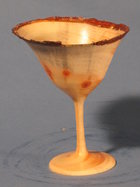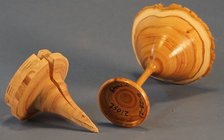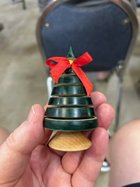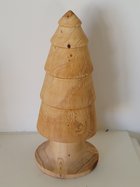Ok so obviously there will be a ton of dead trees everywhere.
I know turning the trunk can result in cracked pith and most Christmas trees aren't even close to big enough to split in half to cut out the pith.
Seems to me like one with lots of branches could make interesting end grain lidded boxes if you make the cracked pith a feature, or if you drill it out and plug with a complimentary wood.
I know turning the trunk can result in cracked pith and most Christmas trees aren't even close to big enough to split in half to cut out the pith.
Seems to me like one with lots of branches could make interesting end grain lidded boxes if you make the cracked pith a feature, or if you drill it out and plug with a complimentary wood.




